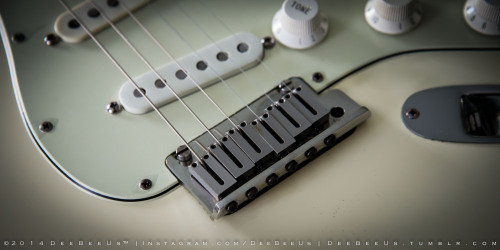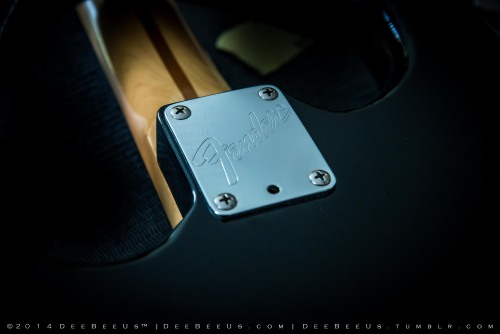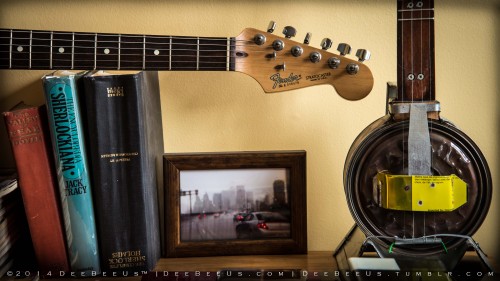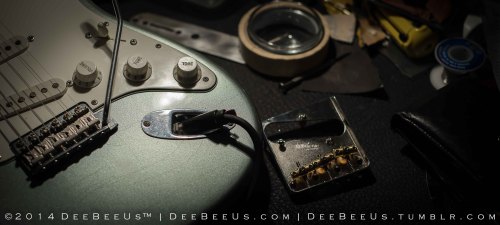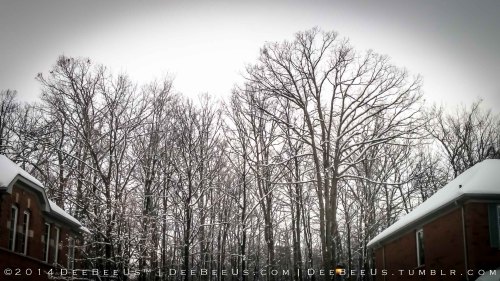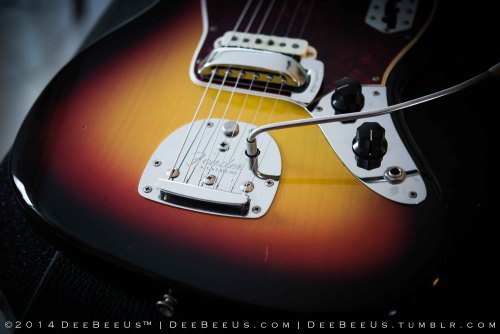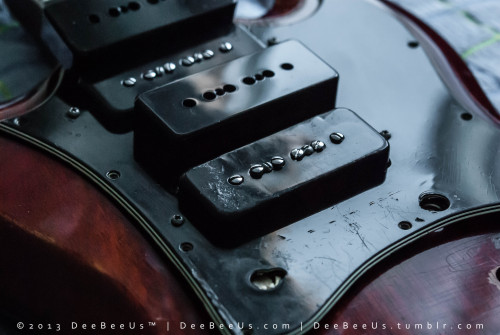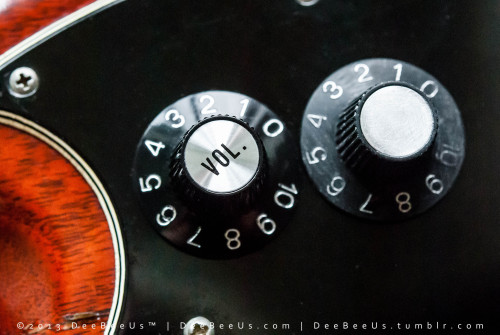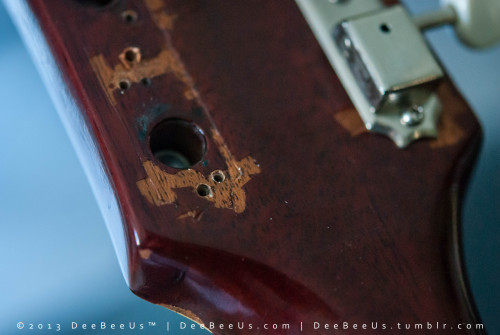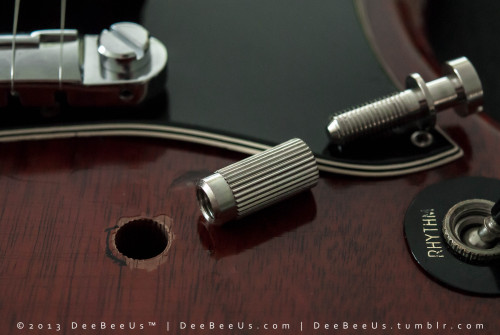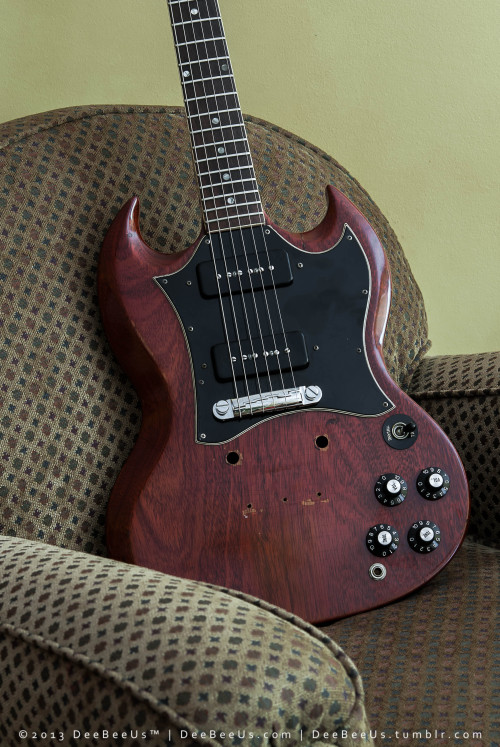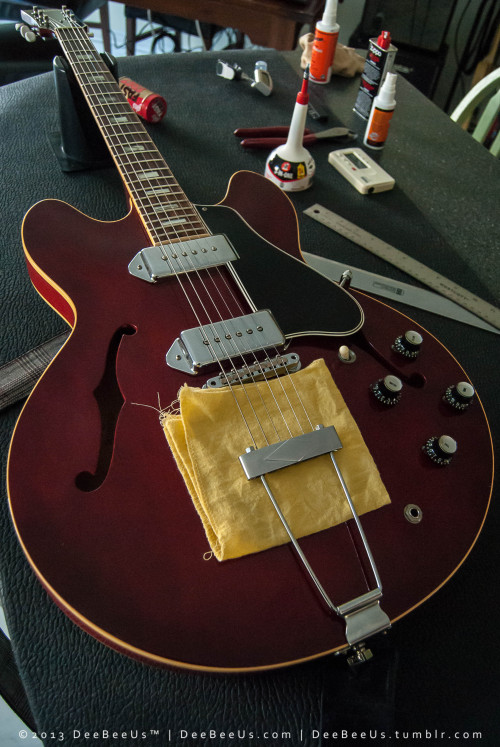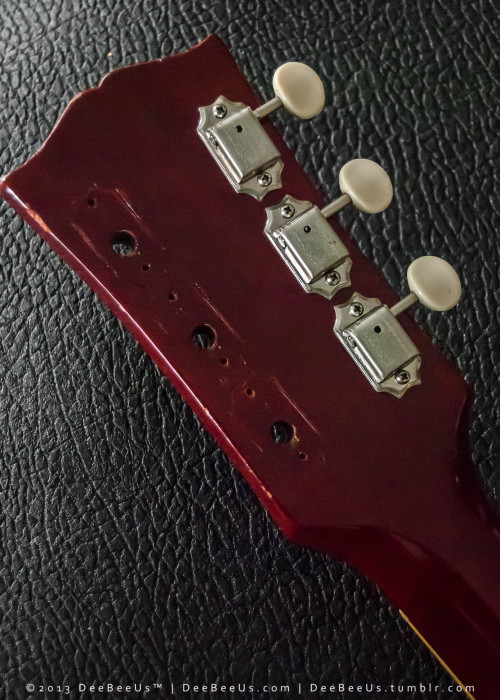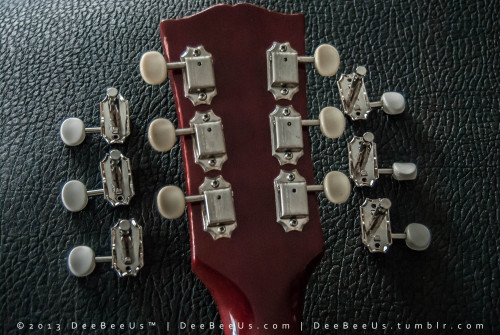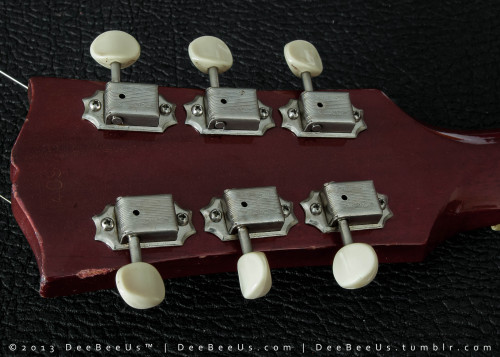Le projet du jour: Another Sunday…another pointless purchase of parts I don’t need!
I was at my friend Peter’s guitar shop, Mojo Music of Oakville (about 20 km/12 miles West of Toronto, Canada), and I could not pass up these Allparts aged tuners. They looked so great and the price was right too.
So they are going on my 2012 SG Standard P-90…for no particular reason. I had already changed the tuners on this guitar once before…I removed the stock “tulip button” tuners and replaced them with ones that had white plastic buttons…in an attempt to morph it into something more like a 1960s SG Special. But obviously an SG Special would have had “plate” tuners with white plastic buttons…not these individual white plastic button tuners. But what the hell? I must have been bored and poor that day as well! Anyhoo: now that I have a proper replica of a white 60s SG Special, I don’t need to keep pretending this guitar is one! :D







